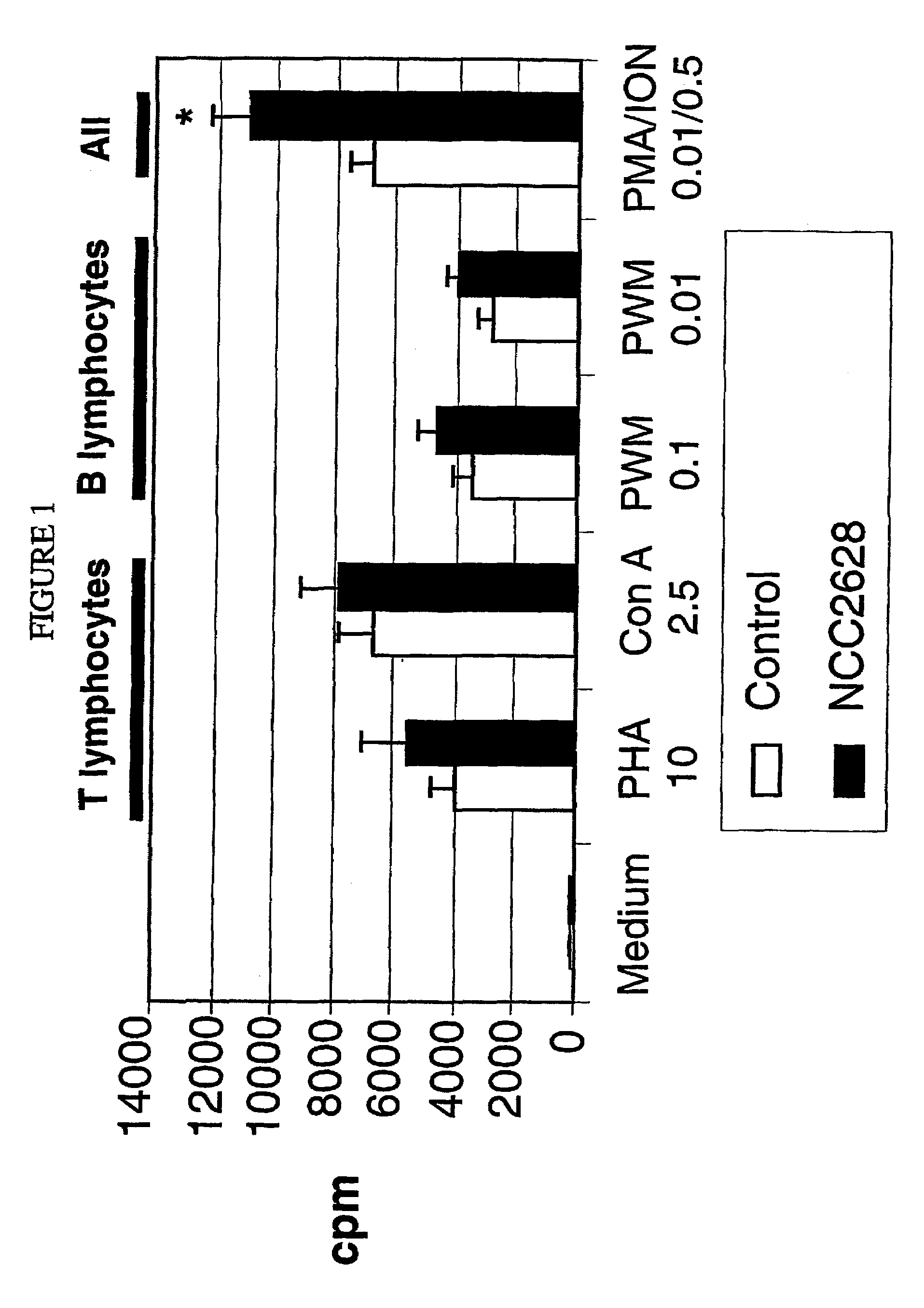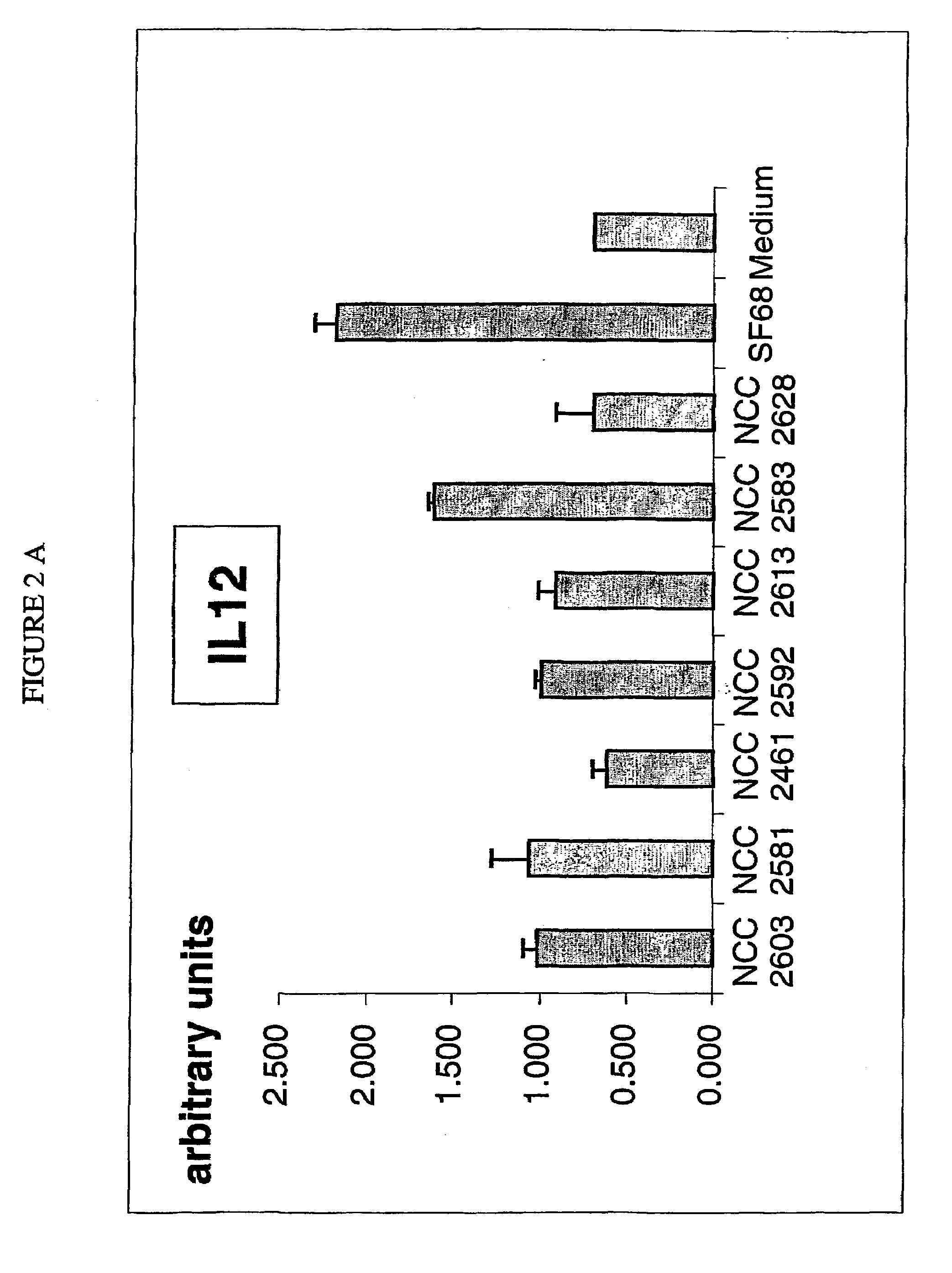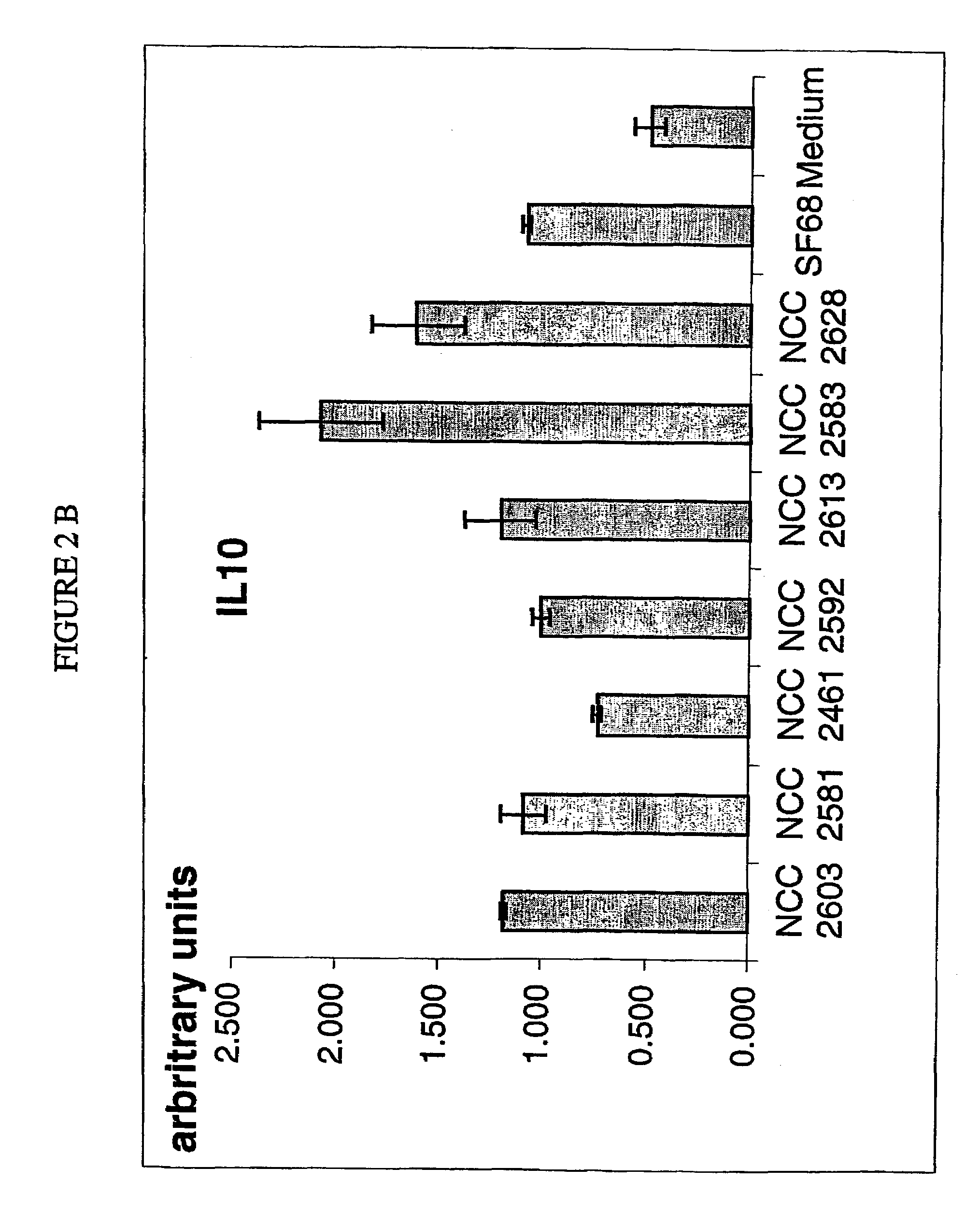Probiotics for pet food applications
a technology for pet food and probiotics, applied in the field of probiotics for pet food applications, can solve the problems that neither the remaining available art nor the literature provides information concerning strains specifically intended for pets
- Summary
- Abstract
- Description
- Claims
- Application Information
AI Technical Summary
Benefits of technology
Problems solved by technology
Method used
Image
Examples
example 1
Strains and Culture Conditions
[0098]Numerous strains (from the Nestlé culture collection=NCC) were screened for their potential probiotic use for cats and dogs. In particular, growth potentials, resistance to freeze-drying with subsequent storage, tolerance to gastric acidity and different concentrations of bile salts found in the gastrointestinal tract of cats and dogs, were assessed for those 20 lactobacilli and 18 bifidobacteria isolated from cat and dog faeces presented in Table 1.
[0099]
TABLE 1Codes and characteristics of bacteria selected for the assaysAnimalType ofNH3 fromLacticIndentified withNCC-CodeCNCM-CodeCodespecies origindiet intakearginineacidAPI50CH2578—LB1-1CatMixed−LL. animalis / ruminis2581I-2448LB1-2CatMixed+D / LL. reuteri2583I-2449LK1-1CatMixed−D / LL. rhamnosus2586—LK1-2CatMixed+D / LL. reuteri2590—LH2-1CatDry−D / LL. acidophilus2592I-2450LR1-1CatMixed+D / LL. reuteri2594—LS1-1CatMixed−LL. animalis / ruminis2597—LA2-5DogWet−LL. animalis2600—LC2-5DogWet−D / LL. fermentum / reuter...
example 2
Selection of Bacterial Strains
[0104]This in-vitro screening was based on production characteristics for an industrial application of viable cells, their ability to survive inhibiting or detrimental gastro-intestinal conditions and their genomic diversity. Strain diversity or genomic similarity of those non-characterized strains was taken into account, using RAPD and ribotyping.
Materials and Methods
[0105]Bacterial Growth
[0106]The strains that are able to produce rapidly high number of cells have to be identified. Their bacterial growth cycle can be characterized by a short lag phase, a short generation time, high maximal counts and a long stationary phase. Therefore, strains were compared by considering three variables: the length of their lag phase, their generation time (in hours) and their maximal counts, which corresponded to the most important characteristics.
For Lactobacilli:
[0107]200 ml MRS broth preincubated at 37° C. was inoculated with 1% of a fresh subculture. One ml sampl...
example 3
Efficacy of Colonization in Cats
[0168]L. reuteri NCC2581, L. reuteri NCC2592, L. rhamnosus NCC2583 and Bifidobacterium sp. NCC2627 were tested in feeding trials so as to evaluate their capacity to survive the passage of the cat gastrointestinal tract.
[0169]16 cats male and female as equal as possible were subjected to 3 days of adaptation with Friskies Grand menu boeuf. The feeding protocol consisted in 7 days with “Friskies Grand Menu” and 7 days of test with “Friskies Grand Menu” containing one of the above mentioned strains: L. reuteri NCC2581 (diet A), L. reuteri NCC2592 (diet B), L. rhamnosus NCC2583 (diet C) and Bifidobacterium sp. NCC2627 (diet D). The diet assignment was the following:
[0170]
Cats n°12345678910111213141516Period 1ADCBDAACBABCBDCDPeriod 2BADACCDACBCDDABB
[0171]The said strains were prepared in a sufficient amount and in a stable lyophilized form to apply these eight different bacteria with regard to strain-survival in the gastrointestinal tract of the tested ani...
PUM
| Property | Measurement | Unit |
|---|---|---|
| pH | aaaaa | aaaaa |
| pH | aaaaa | aaaaa |
| pH | aaaaa | aaaaa |
Abstract
Description
Claims
Application Information
 Login to View More
Login to View More - R&D
- Intellectual Property
- Life Sciences
- Materials
- Tech Scout
- Unparalleled Data Quality
- Higher Quality Content
- 60% Fewer Hallucinations
Browse by: Latest US Patents, China's latest patents, Technical Efficacy Thesaurus, Application Domain, Technology Topic, Popular Technical Reports.
© 2025 PatSnap. All rights reserved.Legal|Privacy policy|Modern Slavery Act Transparency Statement|Sitemap|About US| Contact US: help@patsnap.com



